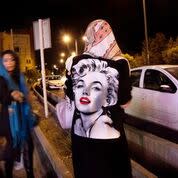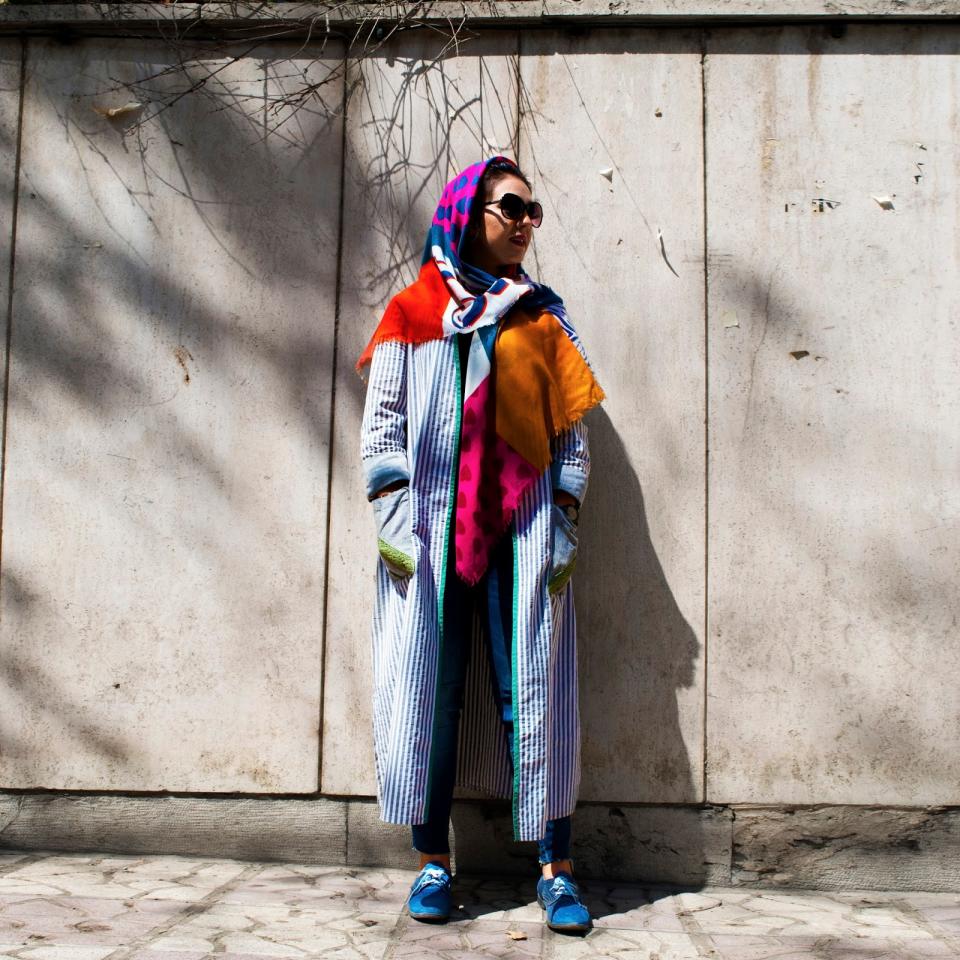How Iranian street style thrives under the country's strict dress code

Since the 1979 revolution, which brought an Islamic government to power, women in Iran have had to follow a strict dress code that requires them to wear a headscarf and a coat (known as a manteau).
Over the years, women have resisted this mandatory dress code both covertly and in more daring ways, risking being apprehended and possibly even imprisoned, by the undercover clothing police who patrol the streets in cities and towns across Iran. But the dress code restrictions have also forced an exciting and original fashion scene to take root in Iran, where designers work above and below ground to create clothing that adheres to the dress code, yet showcases their creativity and gives everyday Iranian women a chance to express their individuality.
The sea of manteaux and headscarves you see on the streets of Tehran come in an array of colors, ranging from pastel pink to bright turquoise. Some younger women opt for open-front, buttonless coats worn over ripped jeans and paired sandals; others are daring to wear shorter, above-the-knee coats. Both styles are marked diversions from the traditional look. When it comes to manteaux, the styles run the gamut — some are embroidered, others may have asymmetrical hemlines. Here and there, a coat is embellished, adorned with a motif inspired by Iran’s history and rich, traditional heritage, or even, as the German-Iranian photographer Samaneh Khosravi, discovered, boldly emblazoned with American icons like Marilyn Monroe.

Khosravi, who has lived in Germany for over seven years, says she herself was surprised to hear from friends in Iran about the cult of beauty and fashion that exists there despite the government’s restrictions, and in 2015, she decided to go to Iran to see it at first hand.
“There’s this idea that the world has about Iranian women today that is in total contrast with reality,” Khosravi, who published her photos documenting Iran’s contemporary fashion styles and beauty ideals in a book entitled Among Women, says. “In Iran, you find different perspectives of beauty and beauty ideals that are not really known in the Western world.”
In Iran, “fashion persists despite limitations,” Mahtab, a fashion-forward student in Tehran, tells Yahoo Lifestyle.

And that’s possible mainly because of the work of underground fashion designers, whose designs are highly sought after by after by young Iranians eager for the innovative ways in which they push the boundaries of the mandatory dress code.
It isn’t easy to find Iran’s underground designers: They operate out of their homes or via private Instagram accounts, says Iranian activist Hoda Katebi, who also founded the fashion and activism blog JooJoo Azad. Katebi lives in the United States, but has spent long periods in Iran. During a recent trip to the country, she met with many of these underground designers who host invitation-only fashion shows in private spaces, often for audiences of both sexes, something that is forbidden in Iran. These designers have loyal clientele who buy and wear their creations.

Katebi showcased many of her favorite Iranian street style looks in her 2016 book Tehran Streetstyle. “While I think a mandatory dress code is wrong,” Katebi says, “I learned from my time in Iran that beauty and modesty are not incompatible, that they can coexist in many different and exciting forms.”
Many items push the limit. Take the aforementioned Marilyn Monroe coat: The coveted, but hard-to-find garment was only on sale in private and by the designer herself, Khosravi says. “It’s an example of a really unique creation that, while respecting the overall prescription for modesty in dress and a full manteau, clearly pushes the limits,” she adds.
The fact that the Iranian government’s mandate for modesty is so general carries with it a certain element of risk: Risk for the wearer of a unique item, who could get stopped by the clothing police patrolling the streets, because in their view, it oversteps the dress code, and risk for the designers, whose business could get closed down, particularly if they have a public Instagram account with a large following that comes to the attention of the government.
The lack of set boundaries is also a hindrance for those on the other side of the fashion photographer’s camera. Kourosh Sotoodeh, a New York-based Iranian fashion photographer, began his career in Iran, but after a time, found himself limited in his artistic expression and in terms of what he could and couldn’t shoot. Ultimately, Sotoodeh left Iran, and his website is now banned there. “When the rules are not clear, I sometimes was not sure whether what I was doing can’t be justified by the laws in Iran … and this is when you make a decision to pursue or not to pursue a certain path as an artist,” he says.
Still, even as undercover agents continue to track them, fashionistas continue to find new forms of self-expression that push the envelope.
Read more from Yahoo Lifestyle:
Follow us on Instagram, Facebook, and Twitter for nonstop inspiration delivered fresh to your feed, every day.


